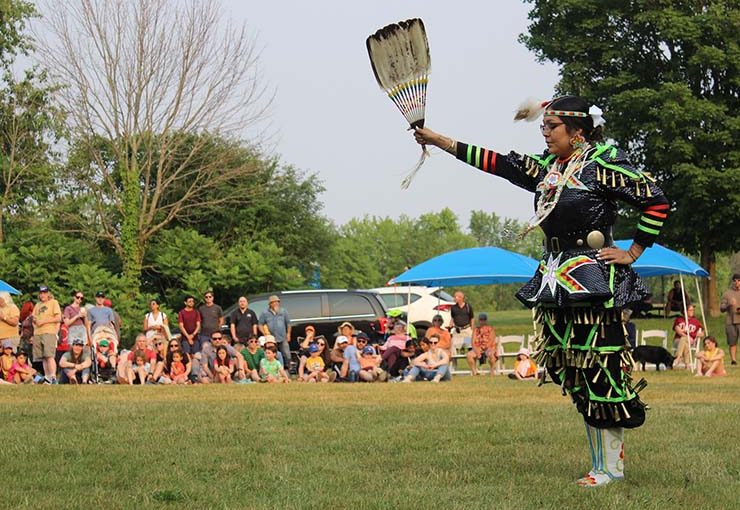KENILWORTH – Wellington North’s newly endorsed land acknowledgement shouldn’t be the culmination of an attempt at reconciliation, but a starting point, council heard at its June 19 meeting.
Martin Cooper, a senior archaeologist and associate with Archaeological Services Inc., presented council with the new acknowledgement, recognizing Wellington North’s intersection with five treaties involving land traditionally belonging to the Anishinaabe and Haudenosaunee First Nations.
The most recent treaty, treaty 45.5, was signed in 1836 and is known as the “Saugeen Tract Purchase.”
“Because of the central location of Wellington County and Southern Ontario, a lot of different treaties intersect, so it’s an interesting area for sure in terms of the history,” Cooper told council.
In addition to acknowledging that the township sits on treaty lands and territory of the Mississaugas of the Credit First Nation, Saugeen Ojibway Nation, and territory of the Haudenosaunee, the 145-word statement notes that encroachment by non-Indigenous settlers pushed First Nations peoples from the Wellington North area to settlements elsewhere.
“Today the township of Wellington North remains home to Indigenous peoples from across Turtle Island. We are grateful to have the opportunity to share and respect Mother Earth and are committed to building constructive and cooperative relationships with Indigenous nations,” Cooper said, reading from the statement.
Turtle Island refers to North America in an Indigenous creation story, in which the Earth was created on the back of a turtle.
Research that would culminate in a 58-page report and form the basis for Wellington North’s statement began last year when the township joined with five other Wellington municipalities (with the exception of Erin) and hired the archaeological and heritage consultants to develop land acknowledgements for each municipality.
“ASI conducted critical review of land acknowledgements to get an understanding of both the best practices associated with creating and giving land acknowledgments, as well as the criticisms that have been raised,” Cooper told council.
“Some Indigenous people feel that [acknowledgements] just pay lip service to reconciliation and cooperation,” Cooper said of the criticism addressed by the firm.
“It worries them that the land acknowledgement is all that they’re going to see in terms of cooperation … they’re worried that it’s also to relieve guilt for what happened in the past … so they’re quite critical of land acknowledgements,” he went on to say.
Cooper told councillors the firm worked to overcome some of the failings of acknowledgments heard in the past 15 years, including lazy research and historical inaccuracies.
ASI took from existing acknowledgements and solicited opinions from various First Nations and councils.
Representatives of the Six Nations of the Grand River, the Mississaugas of the Credit, and the Saugeen Ojibway Nation provided written comments on the report, according to Cooper.
“We actually changed it from the original, based on their suggestions,” Cooper said.
Each municipal acknowledgment prepared by the firm has been tweaked to address differences throughout the county.
“There’s overlapping in not only treaty territories, but traditional territories,” Cooper said.
“The southern part of Wellington County is quite different than the north part,” he added.
Council voted to include the acknowledgement in inaugural council meetings, official meetings with Indigenous nations, and formal unveilings and ceremonies.
If deemed appropriate, the acknowledgement could also be used during other meetings, presentations, open houses, and on municipal documents.
What matters, CAO Brooke Lambert noted in a report to council, is that the statement is said in a “meaningful way and not simply recited out of routine or as a matter of process.”
The statement serves as one way the community can “remember and honour the history of a specific place,” Lambert wrote, adding, it’s to be a “statement of respect and offer of reconciliation.”
Cooper advised the township should also seek out more ways to improve relations between non-Indigenous and Indigenous community members.




